Tyre Type Information for Your Car and Van
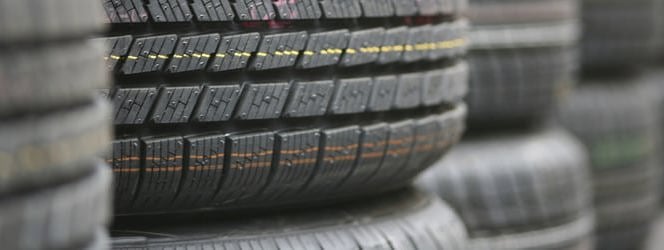
As your vehicle’s only contact point with the road, the tyres you use need to be appropriate for your vehicle lease hire’s size and weight, as well as the surface on which they run. This comprehensive guide includes information on:
Tyre types and classifications
The size most appropriate to your vehicle is dictated by its make and model, and it is very simple to find out the specification: it is displayed on the sidewall of your tyres. Alternatively, stockists like Kwik-Fit have a useful search facility.
How to read a tyre sidewall
A sidewall is simple to read if you know how. Taking a tyre marked '175/80 R14 88H' as an example:
Sidewall marking | Meaning | Description |
|---|---|---|
175 | Width | Measured in millimetres. |
80 | Aspect ratio | The height of the sidewall as a percentage of its width. |
R | Construction type | Actually redundant - 'R' stands for 'Radial', as the majority of modern tyres are. |
14 | Wheel rim diameter | Measured in inches, the diameter of the rim wheel has been designed to fit. Measured bead shoulder to bead shoulder. |
88 | Load index | An index of potential weight, rather than an actual measurement. A load index of 88 corresponds to 560kg. The full index can be found on Protyre’s website. |
H | Speed rating | A second index for speed ratings. Confusingly, not strictly alphabetical: ‘H’ appears between ‘U’ and ‘V’. ‘H’ rated tyres can be used up to 130mph |
How to use sidewall information to purchase tyres
Wheel size, width and aspect ratio
It is generally not advised (though not impossible) to deviate from these specifications in order to upsize or downsize, therefore we have chosen not to cover this aspect of tyre size in this guide. More information (and a handy legality calculator) can be found on Etyres.co.uk
Some drivers make a switch because, for instance, wider tyres can help achieve better cornering (sacrificing wet weather performance and fuel economy). Often the switch is done for purely aesthetic reasons.
Load index and speed rating
Select tyres with ratings greater than or equal to your current set. Failure to do so could cause a catastrophic blowout.
Once you know what you’re changing from and to, take a look at our section on changing tyres.
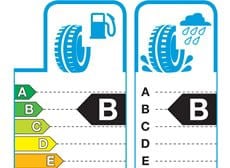
Mandatory labelling
In 2012, the European Union created mandatory labelling, aimed at helping drivers differentiate between tyres. These labels will be familiar to anyone who has purchased white goods in the last decade. With a clear alphabetical colour progression from green (A - good) down to red (G - bad), they rank the green credentials of the tyre, along with several other parameters. Measured on the label are:
- Fuel efficiency (via rolling resistance) on a simple A to G scale
- Wet grip, again on an A to G scale (though without colour, a reflection of the fact that bad wet weather performance doesn’t necessarily mean a bad product)
- Noise (measured in dB. The accompanying pictogram allows products to be broadly ranked)
Road tyres broadly look very similar, but look closer at two different brands and you’ll see a variety of geometric shapes. For trivia’s sake, the various recesses and protrusions are called grooves, lugs, voids and sipes. These features channel water, expand to cope with weight and provide traction via contact with the road.
Fans of motorsport may be familiar with the basic principles at work: for maximum traction, race cars may use completely treadless rubber – racing slicks – in dry weather to achieve maximum possible speeds. However, in wet weather, they change to rubber marked with deeper treads in order to manage surface water and prevent major handling problems.
Motorsport offers an extreme example, but the principles do apply to UK road users. Some common types and their construction are explored below:
“Although the legal requirement for minimum tread depth in the UK and EU is 1.6mm, it is advised that you should change your tyres when the tread drops below 3mm.”

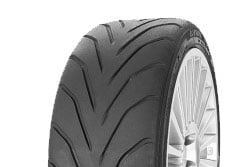
High performance
High performance tyres give you more rubber in contact with the road to boost traction. Rain water grooves are shallower and thus make your car harder to control in wet weather. High performance products also tend to be made of softer compounds – again, to boost traction, with the caveat that they wear down more quickly
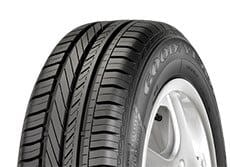
Summer tyres
It’s important to remember that tread types are named within an international context – in other countries summer tyres are a necessary seasonal switchout. In the UK, summer tyres are actually fitted to the majority of passenger vehicles all year round. They offer fantastic grip and durability in both wet and dry conditions, thanks to a good balance of water channelling grooves and road-hugging rubber.
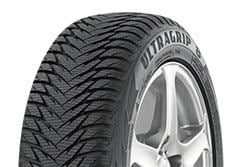
Winter tyres
Products specialised to provide greater traction through softer compounds and greater tread depth are marketed as ‘winter tyres’ and make driving in snow, ice and even rain substantially easier. Such examples wear out quickly in warm weather, however, and therefore are only useful for some months of the year. We have more information on our winter care pages.
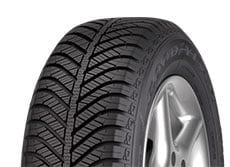
All season
Though summer tyres are adequate for the vast majority of journeys in the UK, all season remains an option for anyone who wants to cope better in cold weather without the hassle of seasonal changes. Consider these a jack-of-all trades but a master of none: the higher density of grooves will make dry weather motoring less pleasant and won’t be quite as useful on ice and snow as actual winter products.
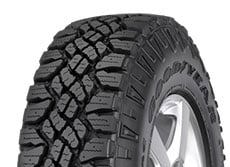
All terrain
Typically fitted to SUVs, these increase tread spacing to help channel mud out of the tyre. Additionally, the sidewall is strengthened to prevent against punctures.
Minimum tread depth
From the name, you can probably determine that ‘racing’ slicks aren’t intended for use on public roads. In fact, any tyre with grooves of less than 1.6mm is illegal – whether constructed that way, or whether prolonged use has worn it to that point. Most roadworthy products start life with a tread depth of around 8mm, so it does take a considerable amount of time and stress for them to wear down to this point.
How to check tyre tread depth
To ensure that you’re not driving illegally, knowing how to check tyre tread depth is important:
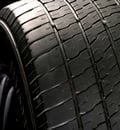
Tread wear indicator
Modern tyres are manufactured with a tread-wear indicator that crosses the circumferential grooves. If these grooves are no longer unbroken, they’ve worn down too far
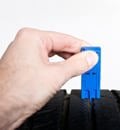
Tread gauge
A simple tread gauge can be purchased from most car accessories shops, including Halfords
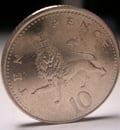
Ten pence coin
A ten pence coin can also help: the distance between the edge and the small dots on the face of the coin is 1.6mm
It's also important to understand how the rules are applied:
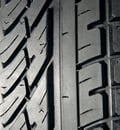
Minimum depth
The minimum depth must apply across at least 75% of the tyre’s width This band of 75% minimum depth must be continuous around the circumference of the tyre
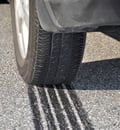
Stopping distances
Because products can wear unevenly, you should consider changing tyres once they start dipping below 3mm (even at this point, stopping distances can be impacted dramatically)
Guide Information
Originally published: 19th October 2015
Last updated: 3rd October 2022
